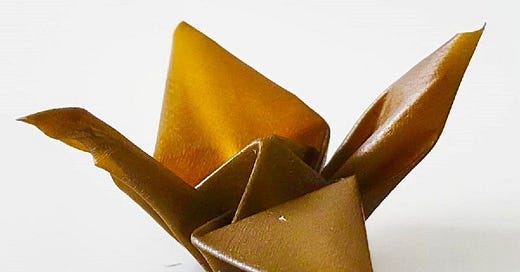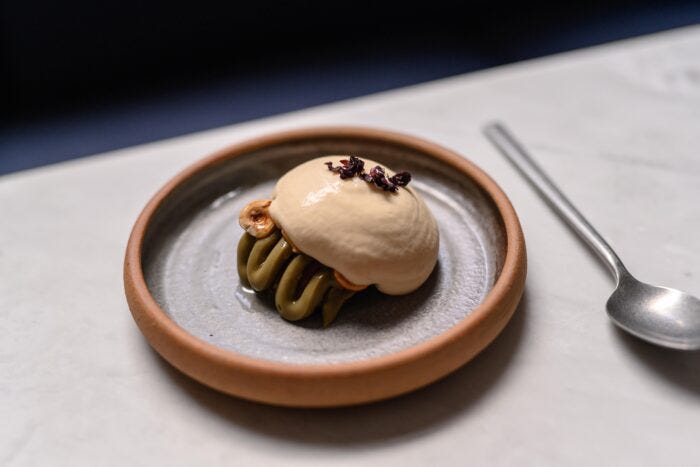Evaluating new seaweed harvesting techniques
Also: Ben & Jerry's adopts Asparagopsis, Oman's kelp disappears, a focus on taste
After 4 years of preparation, TROFX’ ARPA-funded project to develop an offshore seaweed farm structure has been demonstrated to withstand 20-foot waves. Instead of traditional ropes, it uses fiberglass to make it safe for marine mammals, alongside helical anchors put in place by a robot. The next obvious question is: does it also grow seaweed at a cost of less than $80 per dry metric ton, as mentioned in the project brief?
The question of cost effectiveness was also at the heart of 2 studies on multiple partial harvesting, as practiced by Ocean Rainforest in the Faroe Islands. A study conducted in 2018 said it could decrease costs and improve profits. However, a new study in 2022 says the exact opposite, pointing instead towards harvest timing as the most impactful factor to optimize for when trying to increase yield and quality.
In Alaska, Blue Evolution showed off their buoyant bags to haul in the harvest. And land-based seaweed aquaculture saw some innovation as well, when a hydroponics guy started growing seaweeds in Hendersonville, North Carolina, a 5-hour drive from the nearest beach.

Finally, a correction. Last newsletter spoke of The Climate Foundation’s XPRIZE-winning technology as artificial upwelling. It’s not. Instead, we should call it diurnal deep water cycling. This means the growing platform gets dropped at night for access to nutrients and raised again during the day for access to sunlight.
Asparagopsis feed supplement for Ben & Jerry’s
California’s food safety authorities have approved Brominata, Blue Ocean Barns’ Asparagopsis-derived methane-busting feed supplement. After Australia in March, California is the second place in the world that allows asparagopsis to be fed to animals. First customers for Brominata include Ben & Jerry's, Straus Family Creamery, and Clover Sonoma.
More good news for Asparagopsis growers: CH4 Global received USD $2.6M to advance the development of Asparagopsis production in South Australia.
Bad news for Asparagopsis growers: Aussie startup Rumin8 is planning to chemically reproduce the anti-methane bioactives in Asparagopsis without going through the process of actually growing the seaweed, which should make their product cheaper, more consistent and easier to scale.

Cascadia Seaweed also received a grant: USD $400,000 for a systematic assessment of compounds within Canadian native seaweeds to improve animal health, increase feed conversion, and reduce enteric methane emissions produced by cows, sheep and goats.
Away from Asparagopsis, positive results on animal health were recently reported after trials on poultry with Ocean Harvest Technology’s OceanFeed, and trials on pigs and broilers with The Seaweed Company’s new seaweed blend.
Conservation: Oman loses kelp forest
Oman’s kelp forest was likely the only population of Ecklonia radiata in the northern hemisphere, with a haplotype that is found nowhere else. It has disappeared, most likely due to rising ocean temperatures.
The race is on to prevent further losses. Seaforester has made a detailed video showing off their “kelp factory” to restore populations off the coast of Portugal, while The Puget Sound Restoration Fund announced that it is getting $1.7 million over three years from the Paul G. Allen Family Foundation for an expanded monitoring initiative called Eyes on Kelp.

A focus on taste
Last week, New Zealand startup NewFish closed NZ$1.3 million ($816,000) in funding to advance its range of “reimagined” local seafood that incorporates both plant and animal proteins. These include a pāua saucisson containing hand-dived blackfoot abalone, kurobuta pork, kelp, and sauvignon blanc, and an ‘ocean mortadella’ comprising a variety of native seaweeds and microalgae.
Taste was also the focus of 2 in-depth articles from culinary magazines this month. The Locavore asks, “Where is seaweed in India’s culinary canon?”, while Bon Appetit takes a closer look at top chefs' seaweed pantry.
And in New York, chef Victoria Blamey is going back to her Chilean roots with a seaweed-based menu. Her seaweed milk cloud, for instance, infuses chocolate ganache with Irish Moss, pairs that with kombu toffee and tops it with a milk foam, candied dulse and hazelnuts. Yum.



